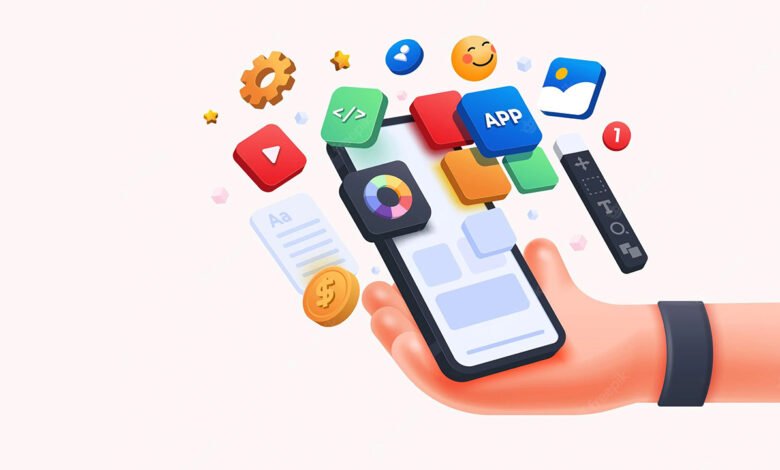An On-Demand App Development Guide on No Coding Platforms

You have a brilliant idea for an on-demand app that could transform your business. But how do you actually turn that idea into a real, functioning app?
Introduction
The App Store was opened with an initial 500 applications available in 2008. Today, there are over 1.8 million apps in the App Store and another 3.5 million (or 96.9%) in the Play Store. That’s because people use apps to work, to learn, to date, to connect, and to better themselves. Undoubtedly, they have been cast as a fundamental part of how people live their lives in the modern world.
Guide To On-Demand App Development
On-demand, in general, means ‘whenever the customer wants’, which denotes the order’s progress and delivery made whenever needed. To develop an on-demand app\, you need to have several things in line for successful project delivery. It’s great that you already have an idea, but you still need to dwell deeply on it to refine it further. Here are some things that you probably need to do during on-demand app development.
Identify The Problem
Before diving into app development, clearly define Innocams – Best Web Development Service Provider the specific problem your app will solve. How will it help users and improve their lives? Apps that provide real value and meet user needs tend to be the most successful. Therefore, you must spend time clearly articulating how your app will benefit your target audience.
Research
The app markets are saturated, so do your homework to understand your target users and competitors and how to differentiate. The usual approach to starting the research process is to see what others did before you and what mistakes they made along the way. Think Uber, Rappi, Gojek, and Deliveroo. You must also have an innate understanding of the business and economic parts of the process for investor purposes.
Define Your Target Audience
Detail user demographics like average age, gender split, locations, jobs, device preferences, behaviors, and spending habits. This helps customize and optimize the app experience. Also, consider how your audience’s needs may evolve as adoption grows. Therefore, you must plan features and functionality with long-term user requirements in mind.
Competitor Analysis
Start reading up on the business plan and models, and keep yourself updated on your selective competitive niches. You must not miss any relevant bits of information you need to keep your business up-to-date. Moreover, it can shape your idea and expand it thoroughly as well. Following are some of the questions that you should ask about their businesses:
- How successfully are they solving the problem? Look at user reviews and feedback.
- How many downloads and reviews do they have? This indicates market traction.
- What features do users like or dislike about the apps? Identify shortcomings to improve upon.
- How is the app promoted and monetized? Look for creative go-to-market and revenue models you can leverage.
Value Proposition
Given the similar apps out there, clarify what makes yours unique and why users should choose it over others. Is it access to exclusive goods and services? Convenience? Personalization? Cost? Focus on your sustainable competitive advantage. Moreover, there are also additional interfaces that you should consider before you start the planning process.
Planning
Carefully map out detailed project plans for timelines, budgets, marketing, and revenue generation. On average, most on-demand apps involve long development cycles, so minimizing risk through planning is crucial. Develop plans for different adoption pace scenarios to remain nimble. Moreover, you should start the screening process of getting skilled individuals involved in your app project.
Launch
The on-demand app is now ready for launch, so it’s time for you to kick off that marketing plan you put together and get it out there.
So pay attention to reviews, respond to customer feedback, fix the bugs, and always evolve your product. And don’t forget to measure (and celebrate) your success!
Website, Admin Panel, and Other Interfaces
Sometimes, having a website works just fine. In on-demand business, you’d have both. The website boosts the overall online presence and redirects the internet user to the Play Store or App Store link.
During your research phase, you’ll come across several different interfaces for your on-demand app. These interfaces will help your overall business get more control over different things and create a stronger online presence.
For instance, a delivery app acts as a bridge between its customers and the local store. That means three different platforms must be developed for it, i.e., the customer app, the store app, and the delivery driver app.
Apart from the website and different app platforms, an admin panel allows the business owner to see different analytics in real-time via several dashboards. These visually stunning data-driven dashboards cover everything about the on-demand delivery business from start to finish.
Finding An Ideal White-Label Firm For Your On-Demand App Development
After you have done all the homework for your on-demand app, it’s time for execution. Now, most entrepreneurs can hire in-house developers and designers, while others can outsource the entire project. However, the best choice for on-demand app development has been through clone apps available via white-label firms.
By investing in an already-made app for the delivery service you are planning to get into, you will save considerable time and money. Therefore, finding an experienced white-label firm is an important phase in the development of your app. Otherwise, you would have to spend months designing and developing your app from scratch.
Some white-label firms will do exactly what you ask for, and that’s great. But isn’t it better to find someone who takes the time to collaborate and work with you to figure out the best route towards achieving your goals? That’s why the discovery process is so vital. The importance of having a collaborative discovery phase is the chance to get to know you and your business. That way, nothing is missed early on.
Conclusion
Bringing a new app to market involves both a creative ideation stage and an execution stage. While most app design teams understand the importance of narrowing down and eventually committing to an idea, there is little guidance for when to transition from ideation to implementation and who should make this decision. Take the help of the white-label firm. They might have the answers you are looking for.



